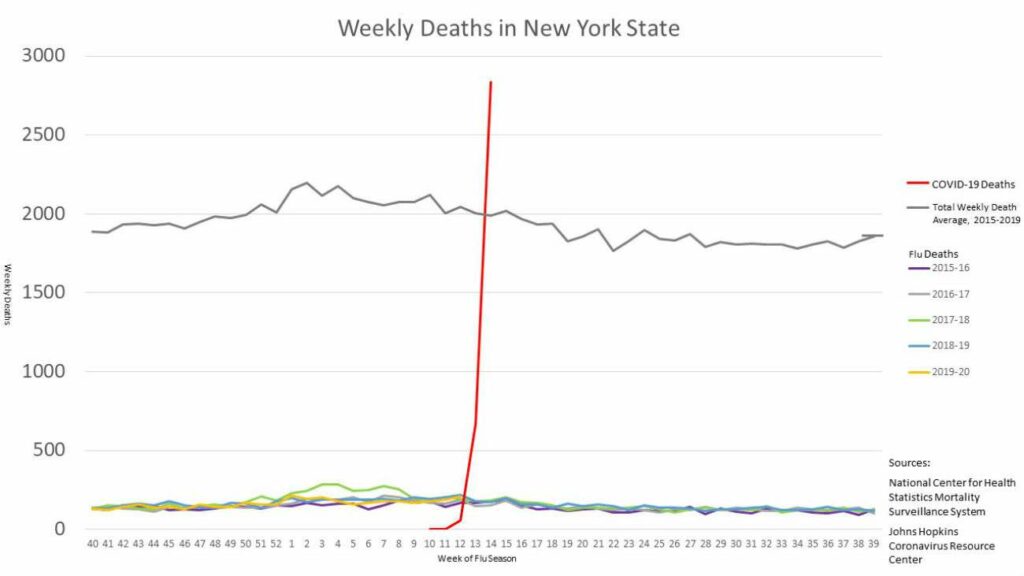If you went back in time to a month ago, you’d probably find many people wondering whether COVID-19 is worse than the flu. There’s no excuse for believing that now.

It’s hard to imagine that New York’s current situation, where it feels like “every day is 9/11”, is better than what most scenarios depicted. It truly is the challenge of a generation, and while the flu is also a major health burden in itself, this is nothing like the flu.
Initially, the case fatality rate reported in Wuhan, China, was around 2%. That was already much higher than the fatality rate of influenza, which is around 0.01% – 0.1%. Now, if we look at official numbers, it would seem that the case fatality rate is closer to 10% — this is the case in places like Italy, the UK, or New York. In reality, many more infected people aren’t being tested, so the real number of infections is much higher than the official one, which, in turn, brings the overall fatality rate lower.
But no matter how we look at it, it’s very different from the flu.
In New York, COVID-19 has already claimed more lives than the last five years of influenza put together, and it’s only been a couple of weeks since the outbreak started in the state — and that’s with a major lockdown, with drastic quarantine measures, with doctors coming out of retirement, and with the most concentrated health effort in modern history. It’s hard to imagine how the chart above would have looked if we all continued business as usual.
The problem is that this idea that “it’s just a flu”, that it’s nothing major, significantly slowed down containment measures. Even as the virus was surging through New York City, dozens of articles and photos showed New Yorkers taking to the parks and paying little attention to social distancing.
Now, the city’s municipality is burying unclaimed bodies in Potter’s Field on Hart Island.
The good news is that the COVID-19 epidemic in New York may be nearing its peak. The bad news is that as bad as it is, this is probably just the first wave — and things need to be managed carefully after this wave to ensure that the second wave isn’t even more devastating.
Much of this could have been avoided by an earlier response, and if more people had taken the disease more seriously. Similarly, much of the damage COVID-19 might cause in the future can be alleviated if we take it seriously and take individual precautions.
For the last time, it’s not the damn flu.


